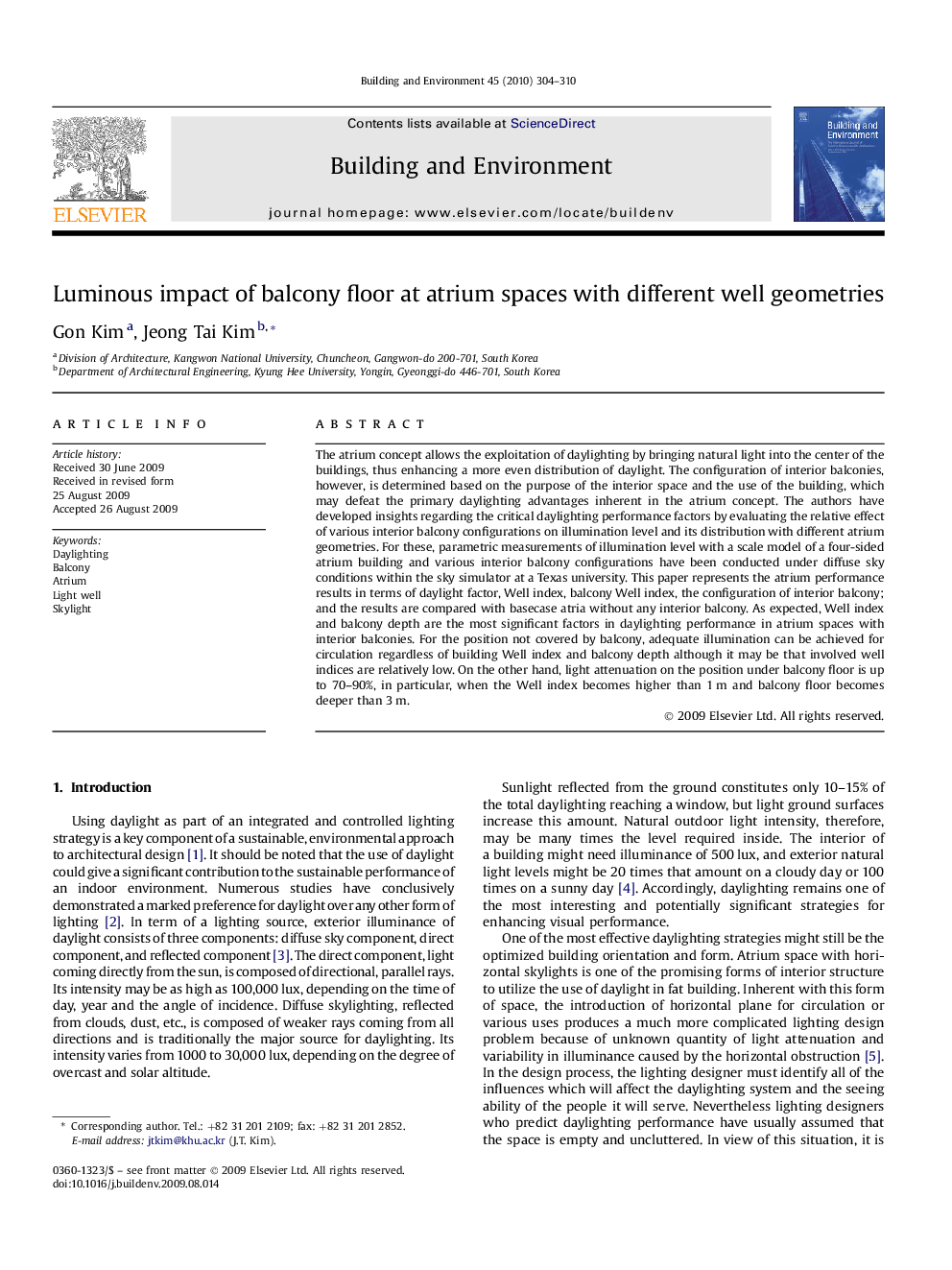| Article ID | Journal | Published Year | Pages | File Type |
|---|---|---|---|---|
| 249157 | Building and Environment | 2010 | 7 Pages |
The atrium concept allows the exploitation of daylighting by bringing natural light into the center of the buildings, thus enhancing a more even distribution of daylight. The configuration of interior balconies, however, is determined based on the purpose of the interior space and the use of the building, which may defeat the primary daylighting advantages inherent in the atrium concept. The authors have developed insights regarding the critical daylighting performance factors by evaluating the relative effect of various interior balcony configurations on illumination level and its distribution with different atrium geometries. For these, parametric measurements of illumination level with a scale model of a four-sided atrium building and various interior balcony configurations have been conducted under diffuse sky conditions within the sky simulator at a Texas university. This paper represents the atrium performance results in terms of daylight factor, Well index, balcony Well index, the configuration of interior balcony; and the results are compared with basecase atria without any interior balcony. As expected, Well index and balcony depth are the most significant factors in daylighting performance in atrium spaces with interior balconies. For the position not covered by balcony, adequate illumination can be achieved for circulation regardless of building Well index and balcony depth although it may be that involved well indices are relatively low. On the other hand, light attenuation on the position under balcony floor is up to 70–90%, in particular, when the Well index becomes higher than 1 m and balcony floor becomes deeper than 3 m.
